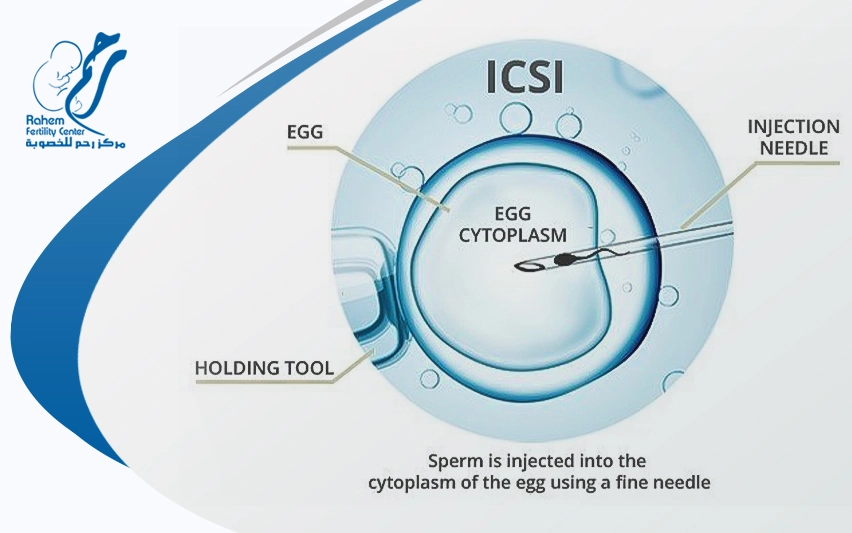Behind every successful IVF story is a lab full of precision, innovation, and quiet miracles
Fertility treatment may feel deeply personal, but it’s powered by some of the most advanced technologies in modern medicine. If you’re wondering what technology is used in IVF, you’re asking the right question because success often depends on what’s happening behind the scenes, not just in the clinic room.
From embryo freezing to time-lapse imaging and genetic testing, IVF today is light years beyond its early days. Let’s walk through the tools and systems that turn cells into life carefully, deliberately, and with increasing success.
Get your inquiry
At Rahem Center, our vision is to be at the forefront of distinguished scientific centers in the field of fertility assistance, not only in Egypt but in the world.
What Tools Are Used in IVF?
To understand what technology is used in IVF, we first need to look at the core tools behind the process. IVF is far more than just retrieving eggs and transferring embryos. It’s a sequence of delicate, data-driven steps, each one guided by a different tool or system.
1. Ultrasound Imaging
Used throughout the IVF cycle to monitor ovarian follicles, uterine lining, and guide egg retrieval procedures with precision.
2. Micromanipulation Instruments
These tools are used for ICSI (intracytoplasmic sperm injection), where a single sperm is injected into the egg. They require microscopes, micro-needles, and ultra-fine control systems.
3. Embryo Culture Systems
Specialized incubators maintain stable conditions for embryos. Modern versions use time-lapse imaging to track development without removing embryos from their environment.
4. Cryopreservation Technology
Freezing eggs, sperm, and embryos with vitrification techniques allows for higher survival rates and flexibility in treatment timing.
5. Genetic Testing Platforms (PGT-A/PGT-M)
Before implantation, embryos can be screened for chromosomal abnormalities or inherited diseases. These platforms help avoid failed transfers and reduce miscarriage risk.
These tools together define what technology is used in IVF but they’re just the start.
know more about: Mental health and IVF
What Is the Modern Technology of Reproduction IVF?
Modern IVF is no longer just manual. It’s increasingly automated, AI-assisted, and biologically personalized.
Here are key innovations reshaping IVF in 2025:
EmbryoScope and Time-Lapse Systems
These incubators use continuous imaging to evaluate embryos in real time. They reduce subjectivity and improve embryo selection accuracy.
AI-Based Embryo Grading
Artificial intelligence now assists in selecting embryos with the highest implantation potential by analyzing development patterns that humans might miss.
ERA (Endometrial Receptivity Analysis)
A molecular test to determine the optimal timing for embryo transfer based on endometrial gene expression, significantly boosting implantation rates.
Mitochondrial Transfer
An experimental technique that adds healthy mitochondria to eggs with poor quality, improving viability in older patients.
Non-Invasive Prenatal Testing (NIPT)
As IVF success improves, advanced prenatal testing ensures early and safe detection of chromosomal conditions during pregnancy.
This is what the modern technology of reproduction IVF looks like: personalized, precise, and designed to optimize every variable.
know more about: Is ivf painful
What Is the Most Commonly Used Assisted Reproductive Technology?
The answer is simple, IVF is the most commonly used assisted reproductive technology worldwide.
Within IVF, the use of ICSI, embryo freezing, and PGT-A has become almost routine in many top clinics. As of recent reports, over 75% of IVF cycles in the U.S. include ICSI, even in cases without male factor infertility.
This growing reliance on technology makes it even more important to ask what technology is used in IVF, and is it being used appropriately for your case?
Get your inquiry
At Rahem Center, our vision is to be at the forefront of distinguished scientific centers in the field of fertility assistance, not only in Egypt but in the world.
read more about: What Are the 5 Stages of IVF
Why the Technology Behind IVF Matters
The average person sees an embryo transfer and hopes it leads to pregnancy. What they don’t see are the hundreds of micro-decisions and the tools behind them that made that transfer possible.
When IVF fails, the reasons are often hidden in missed timings, weak embryos, or undetected uterine issues. That’s why having access to the right technology isn’t a luxury. It’s a medical necessity.
Clinics that invest in evidence-based tools, not just flashy add-ons, give patients a better chance with fewer cycles, less cost, and more clarity.
read more about: how many injections for ivf treatment
So, What Technology Is Used in IVF at Rahem Fertility Center?
At Rahem Fertility Center, we use technologies that are supported by research, not just trends. From advanced time-lapse embryo monitoring to AI-assisted selection and personalized treatment protocols, we focus on tools that deliver outcomes, not guesses.
Your story deserves precision. Book your consultation today and experience IVF built on science, not shortcuts
know more about: is icsi treatment painful













